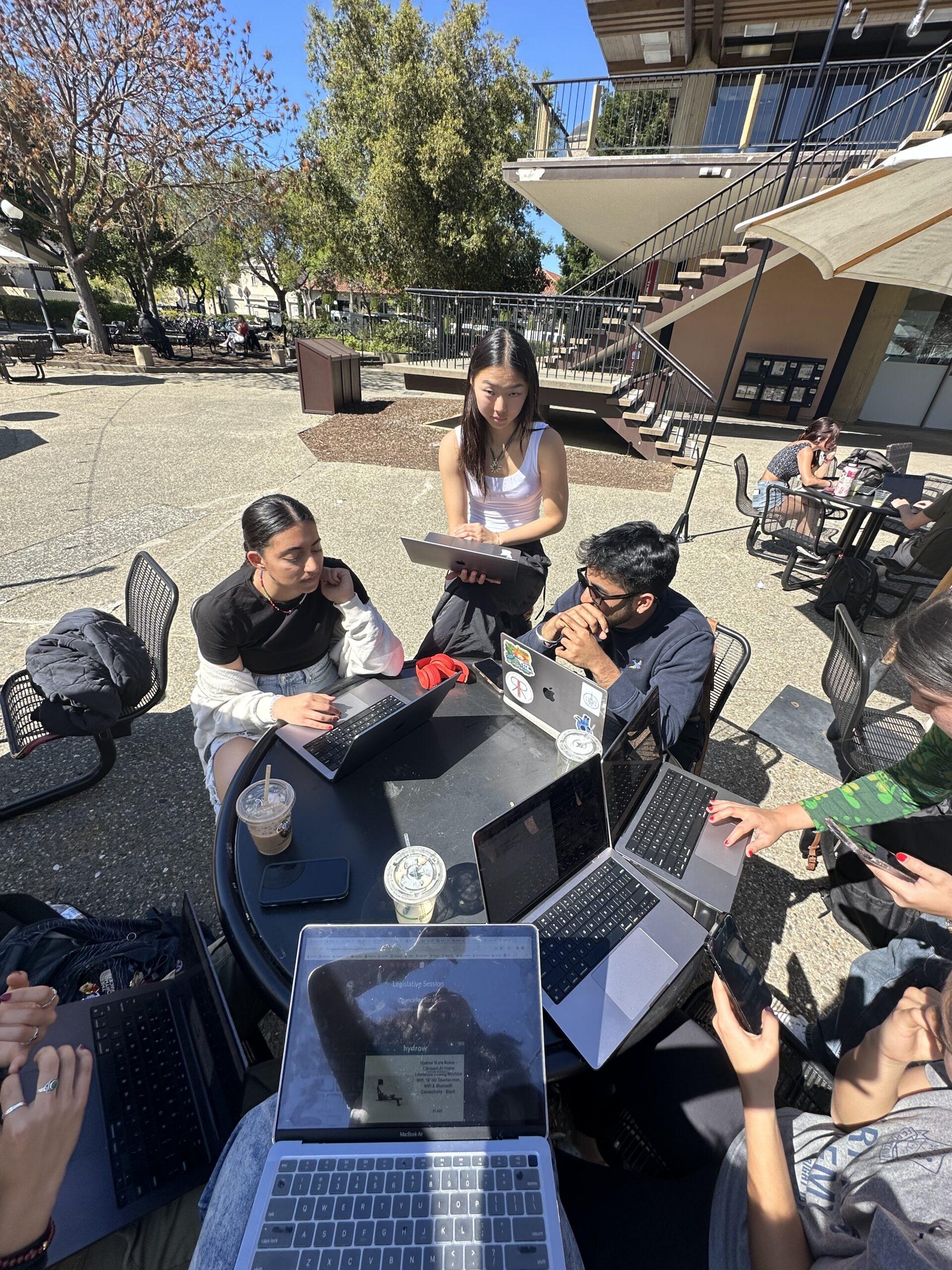My friends and I elected to play Secret Hitler, created by Luke Tsekouras of netgames.io. The game is target towards adolescents and older in groups of 5-10.
From our gameplay, it became apparent that Secret Hitler emphasizes social deduction through including a “core loop” of activities that incites conflict and reason to doubt, and intermissions and times to vote at which suspicions can be discussed. In essence, the game is structured such that procedures that inevitable produce suspicious activity are interspersed between regularly scheduled periods to discuss said suspicious activity. Key to producing suspicious activity and opportunities for discussion are the thoughtfully selected formal elements of Secret Hitler. In particular, well-designed objectives, procedures, rules, resources, conflict, and characters help facilitate engaging discussion regarding Hitler’s identity within the group.
By dividing players into two main “sets” of characters, the fascists and the liberals, Secret Hitler sets the stage for conflict. Moreover, by ensuring that Hitler is not aware of who their fellow fascists are, and by obscuring the roles of each player from one another, the game begins with high suspicions. The game also does a good job of creating engaging objectives, which also all lead to conflict — the fascist goal to pass 3 fascist policies and elect Hitler president directly opposes the liberal’s goals to assassinate Hitler or pass 6 policies of their own. Secret Hitler “gamifies” these otherwise innocuous characters and objectives through a series of well thought out procedures. One example of this is the process of passing policies. The chancellor is allowed to select which 2 of 3 policies to pass onto the president (and that nobody else is allowed to see what policies the chancellor or president are presented with), which presents the opportunity for lots of suspicious activity. The approval of a fascist policy will immediately spark concern, but to whom should it be directed? For example, here are a few questions asked when this scenario arose: “Was the president truly given two fascist policies to choose from, or are they lying?” “Did the chancellor actually give the president a choice between a fascist and a liberal policy?” Every action here is scrutinized thanks to the mechanisms that drive gameplay, allowing for suspicious and combative dynamics.
Secret Hitler offers up many opportunities for players to formalize their concerns, as players can vote as to whether or not they approve of a new president being elected, and chancellors can elect to assassinate players who they perceive as a threat or as Hitler, depending on their own position! Moreover, that fascists are given special abilities and powers as they pass more policies is an excellent example of well-designed resources in action, as the fascist’s ability to read the deck, among other advantages unlocked by passing policies, adds dimension and strategy to the game that would otherwise be lost. For example, Naima (who was Hitler) was able to deduce who some of her fellow fascists were after reading the deck because she could better understand why they played/withheld the cards they did. By allowing for special resources, players benefit from information asymmetry, which in turn facilitates more passionate discussion at crucial decisionmaking points, like when advocating for someone to be assasinated, or for selecting someone as president. In particular, these small details — the additional “powerups” that fascists earn along the way, for example — differentiates Secret Hitler from other renditions of social deduction games such as Mafia, which is much simpler.
While my friends and I thoroughly enjoyed our experience playing Secret Hitler, there is always room for improvement. For one, I thought the rules could be clarified more thoroughly at the start with an example. As the rules were very short, the beginning of the game was a bit clunky as we all learned game strategy and the mechanics of the game, which lowered our ability to maximize the game’s nuances in our early plays. It would even be beneficial to instruct players on the basics of strategy — for example, how one might play to try and avoid suspicion.
In summary, we had a lovely time playing Secret Hitler. The game is deceptively simple in its design, but can quickly grow nuanced as players come to grasp the implications of the game’s mechanisms, which lends itself to rich, engaging discussion and social deduction. In order to accelerate a new player’s ability to play at a high level, the game might benefit from more comprehensive instructions and clarification of rules, so that players can make full use of their resources, procedures, and characters made available to them.
Enjoy this pic of the squad enjoying a beautiful game of Secret Hitler on a beautiful Monday afternoon!




